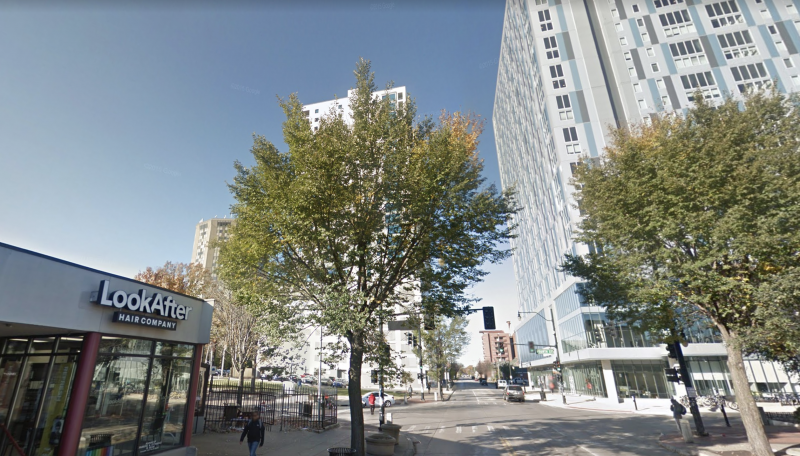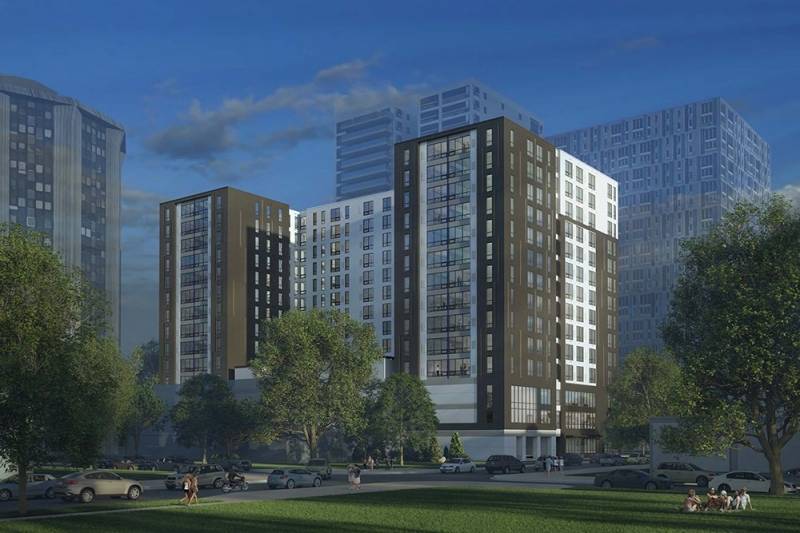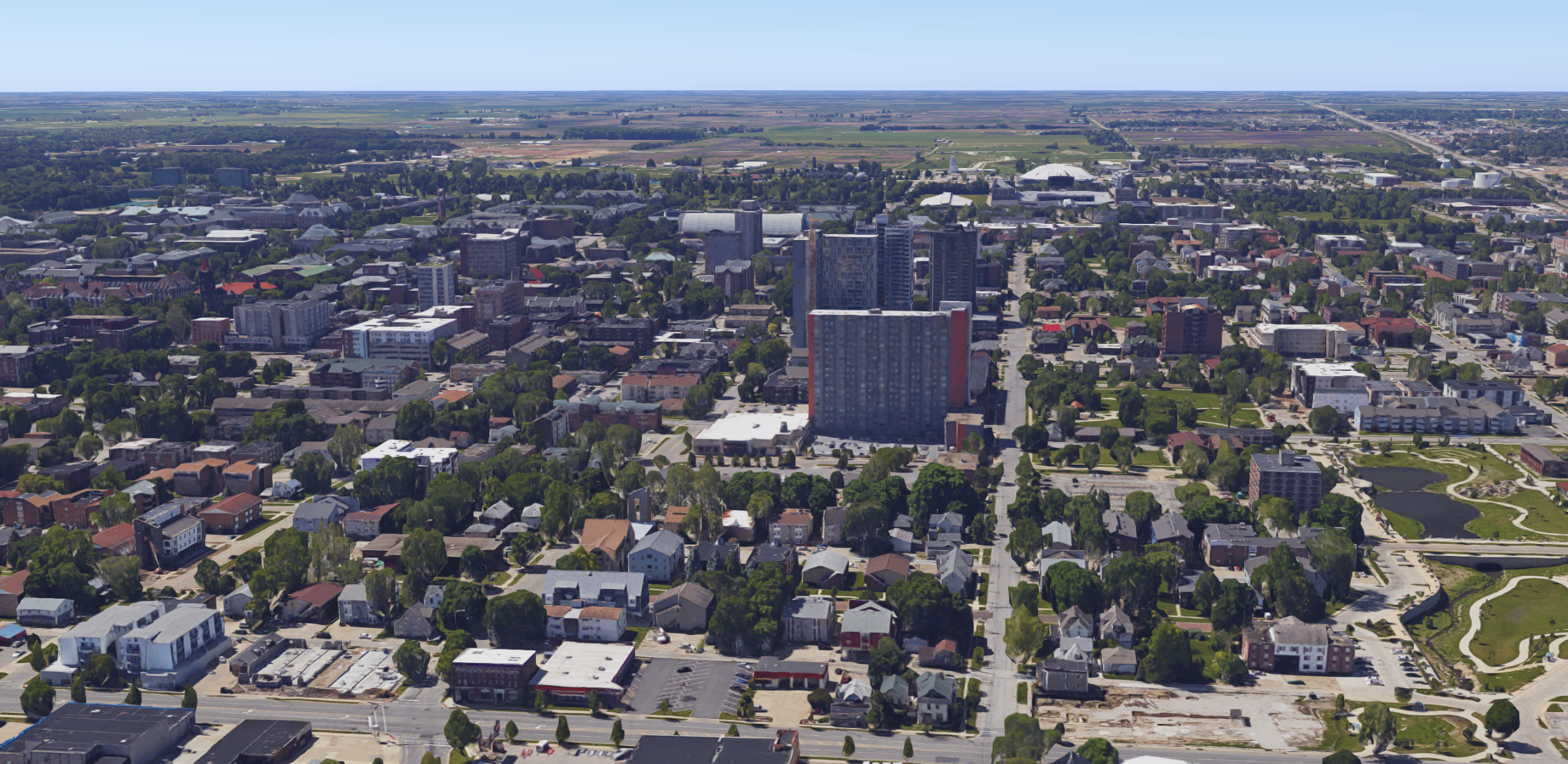Though I am partial to relaxing with a chilled Foster’s tall boy on Amtrak, I sometimes will hitch a ride back to school in Champaign-Urbana from my Evanston home. Past Kankakee, the scenery from I-57 is pretty routine; large fields of corn and soy, the occasional small town, clusters of gas stations, burger joints, and small warehouses form around most exits. Around the same time that one speeds past Thomasboro on their left, they notice some objects in the distance; for the first time in at least an hour of driving they see not silos and barns, but skyscrapers. Champaign-Urbana’s skyline is not imagined, it’s palpable, noticeable, controversial, and ours.
As one inches further southbound along I-57, the buildings become more distinguishable: 310 Burnham, HERE, and 309 E. Green. The three create an imposing presence before the uninitiated even know about a town in the distance–they look like lost skyscrapers placed on the rolling prairie. In fact, these are Champaign’s tallest buildings. They comprise a distinctly new skyline composed almost solely of residences, unlike any other skyline in Illinois. The aforementioned residential towers, alongside Skyline Tower, Bromley Hall, Tower at Third, and Illini Tower, are recent developments that have created an unconventional skyline which dwarfs the traditional downtowns of Urbana and Champaign.
Whereas the Tower at Third was built amidst scandal allowing it a taller height, 309 Green was built via a loophole. The developer took advantage of the fact that parking garage floors did not count towards the overall floor count, a loophole that was rectified after its construction. HERE lofted its floors to sidestep Champaign’s maximum floor count rule.

The response to these behemoths has been mixed, existing outside of a traditional downtown in a neighborhood that once resembled West Urbana, these high-rises seem out of place. Catty-cornered from the 268-foot tall 309 E. Green is a maybe 15-foot tall storefront. It’s woefully out of place given their mid- and low-rise surroundings and the uninspiring parking podium juts out higher from the earth than most other buildings’ top floors. Residents love to lament the bland, boxy architecture of Campustown, and I don’t blame them. The influx of new apartments are a far cry from the once-prominent single-family homes that use to proliferate, and they also put a strain on sanitary and electrical infrastructure that was never intended to serve so many people. Campustown is also unique because it is just far enough from downtown Champaign to not be part of it. It is a whole different animal. Perhaps there would be less outcry if UIUC’s denser development were closer to downtown.

Other people are more welcoming of a vertical Champaign-Urbana; these towers do make C-U feel a little more like a big city. It even has the tall tower wind tunnel, one that anyone who has walked down Green Street in winter will attest to. Campustown is like a tall, lanky teenager–possibly a high school sophomore, a kid who just hasn’t grown into his body, his facial hair is kinda there, kinda not. As it matures, we can see indications that Campustown won’t always remain patchy. A new, 15-story apartment behind 309 might help smooth out the irregular urban fabric and create something more organic. If trends continue, more new buildings will shape Campustown and the skyline of the twin towns; and it is up to Champaign to determine what type of city it wants to be.
I can’t help but draw some parallels between Champaign-Urbana and my hometown, Evanston, a city that is also deciding what it wants to be. Evanston’s city council just rejected three different high rise apartment proposals in an attempt to preserve the city’s character. Perhaps they succeeded in that, yet the city is growingly unaffordable. Northwestern students routinely pay over $1,000 a month for an apartment, per person, even with roommates. Despite less-than-breathtaking architecture, Campustown provides an affordable place for students to reside and its compact location preserves other neighborhoods like West Urbana and West Champaign. To be fair, Evanston grew a lot more organically than C-U’s Campustown, alongside an old train line, its downtown directly abutting Northwestern University, but similarities exist nonetheless.
As we decide what type of Champaign-Urbana we want, we must know that we can’t go back to the Campustown of 50, or even 10, years ago. We must also recognize that our skyline is here to stay, like it or not. Moving forward, we can give our input, get involved, and mold this awkward urban form into a third downtown that students and residents alike can enjoy, and a skyline that’s distinctly C-U.
Images: Google Maps, Opus Development Group








